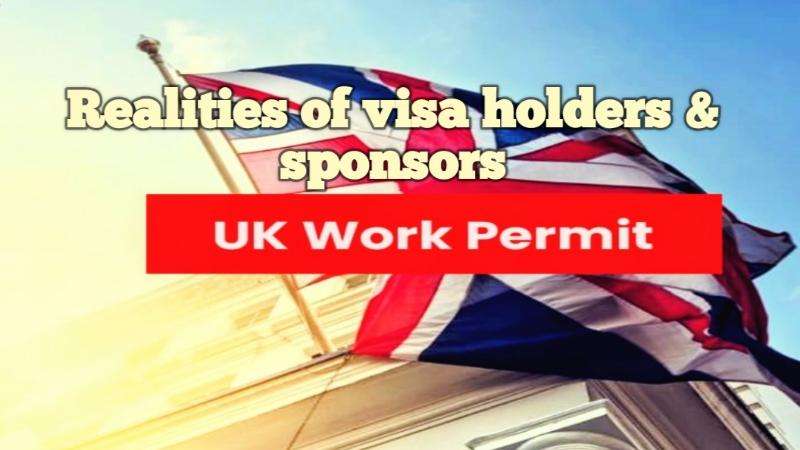Hundreds of millions of pounds have gone into the pockets of a cycle in the name of work visas in Britain.Care home owners and their brokers in particular have pocketed millions of pounds over the past three years.Many companies have had their licenses revoked.More than half of the companies that brought workers did not offer any work.But various companies named Work Permit have sprung up around the business of bringing in workers.They have become millionaires.
It is known that more than 90 percent of the thousands of workers who came from Bangladesh on care visas could not be given work by the relevant employers.Unable to work, hundreds of Bangladeshis are roaming around with their families with visa cancellation notice letters in their hands.But the conglomerates who dream of a better life have taken away hundreds of crores of rupees.Traffickers have bought houses and hotels in Dubai and London with money smuggled through hundi.There are some Bangladeshis who identify themselves as lawyers in this organised circle.Recently, several Bangladeshi-owned law firms in East London have been raided by Britain's legal services regulatory body.
In today's Daily Dazzling Dawn report, we will discuss the current reality of work visa and it's sponsorship.
Limited labour mobility, limited visa periods, and the possibility of becoming undocumented all increase the danger of exploitation and modern slavery practices. Intermediaries engaged in extensive deceit, including false promises concerning employment terms, working conditions, and visa duration. Workers also complained about illegal recruitment fees, wage deductions for travel and lodging expenses, and a lack of understanding about their contractual rights. Migrant workers suffer considerable barriers to reporting concerns or exploitation due to fragmented and underfunded labour inspection systems. Fear of immigration enforcement action, language obstacles, and unfamiliarity with the complaint process all deter workers from seeking remedies.
UK-based businesses with work visa sponsorship licenses have increased by 29% since 2020, accelerated by the end of free movement between the UK and the EEA in 2020, removing the need for passport checks.
Benefits work visa sponsorship
Sponsor licensing in the UK offers demand-driven access to skilled workers globally, with lowered skill level requirements since 2020. It also aids retention by allowing workers to change roles within the UK, which is not always easy. Sponsorship also increases loyalty towards the organization, as it allows workers to stay in the UK.
At what cost?
So, the potential benefits are clear; however, sponsorship comes at a cost. Recent governments have consistently raised the costs associated with obtaining a sponsored work visa – with the most recent increases coming into effect on 4 October 2023 – and there’s no reason to suspect that trend will be reversed.
For an employer that is neither charitable nor ‘small’ there will invariably be an upfront immigration skills charge to pay. This is currently £1,000 for each year of the visa being sponsored (ie, £3,000 for a three-year visa). That’s on top of the £1,500 (approximate cost) that the employer will have paid to obtain or renew their four-year licence. There’s also a small admin fee per sponsorship of around £240. That won’t sound too bad for some organisations, particularly if it means avoiding a hefty agent’s fee. But it’s when you add the visa applicant’s costs that things can become eye-watering.
Sharing the burden-
The employer’s costs cannot be shared with the employee. That’s a breach of the sponsor guidance, which could cost you your licence. However, the worker’s costs can, and offering to support with these can be a powerful tool in securing the candidate. Plus, it could increase the prospect of you retaining the individual for longer.
This is known as a clawback and is, in principle, legal. We often see them in respect of training costs covered by an employer. The underlying principle is your recovery of some of the loss to your expected return on the investment made in the worker.
The same principles apply when it comes to visa sponsorship. If you invest around £7,000 in the visa application for a three-year visa, but the worker leaves at the end of year one, then you’ve essentially not seen two thirds of your anticipated return.
The ‘good’ clawback
So how do you make a ‘good’ clawback arrangement? It’s dangerous to over simplify here. If your clawback is challenged before a court, the judge is likely to make a detailed factual assessment of whether the provisions are reasonable in the particular circumstances. However, some key ingredients include:
Communicating clearly and in writing, and at the offer stage. If a worker says they did not know about, or did not understand the arrangement, you may fall at the first hurdle when seeking to enforce.
Explaining why you are using it. This isn’t just to be considerate to the worker. It lays the groundwork for justification later.
Being sophisticated when designing the clawback. A blunt instrument won’t stand up to scrutiny. So, consider identifying the expected return to the organisation over the period of the visa, and make the amount of the clawback linked to when the worker leaves.
What’s the impact?
Done correctly, an offer of support for visa application costs combined with a sophisticated clawback can:
make the difference in securing the candidate;
set you apart from your competitors in the jobs market;
increase the likelihood of retention of the worker; and
give you the potential to recover a significant part of your investment if the worker leaves prematurely.








.svg)




